#workplace safety
Explore tagged Tumblr posts
Text

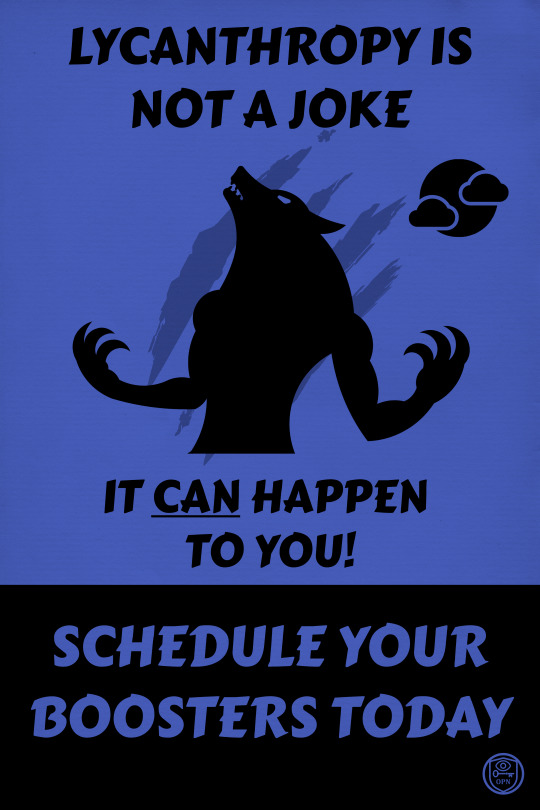
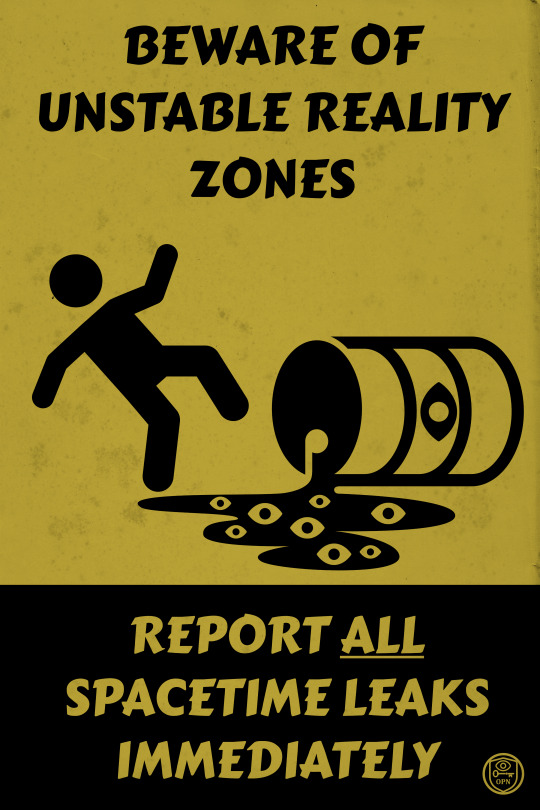



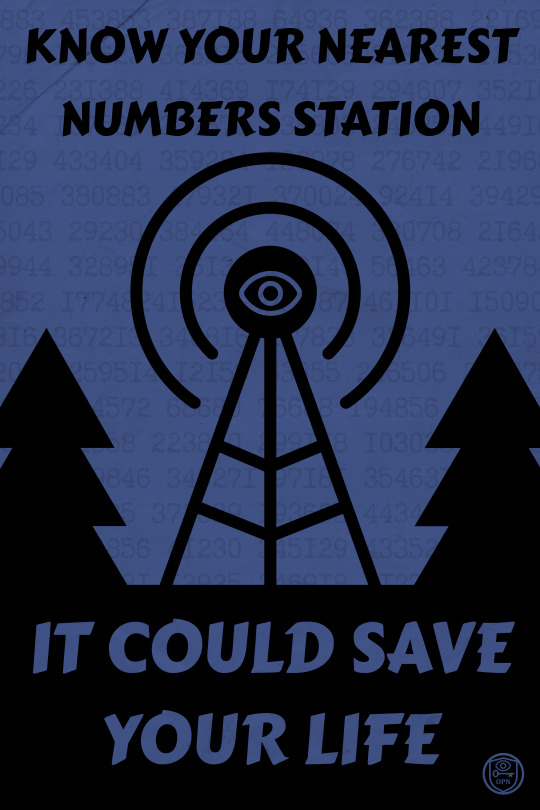
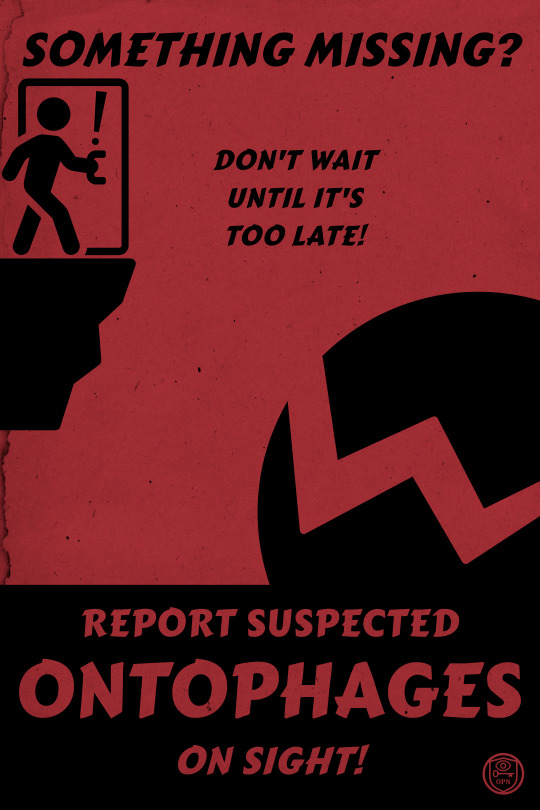


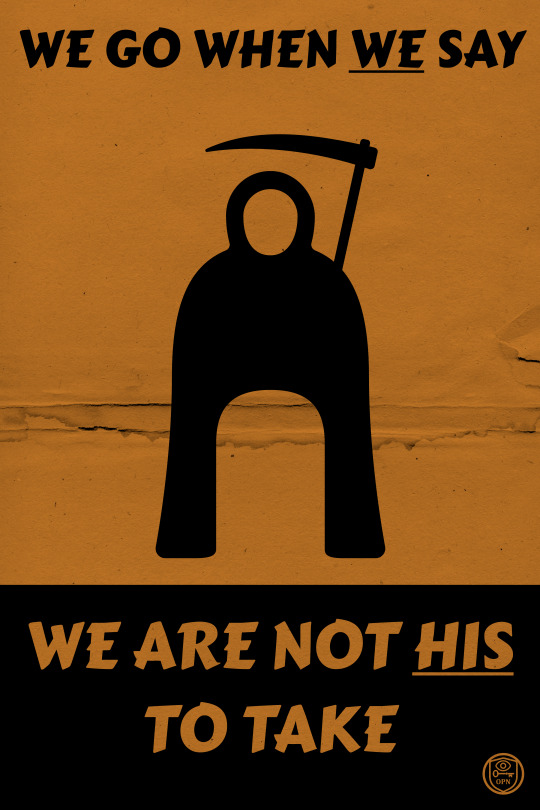
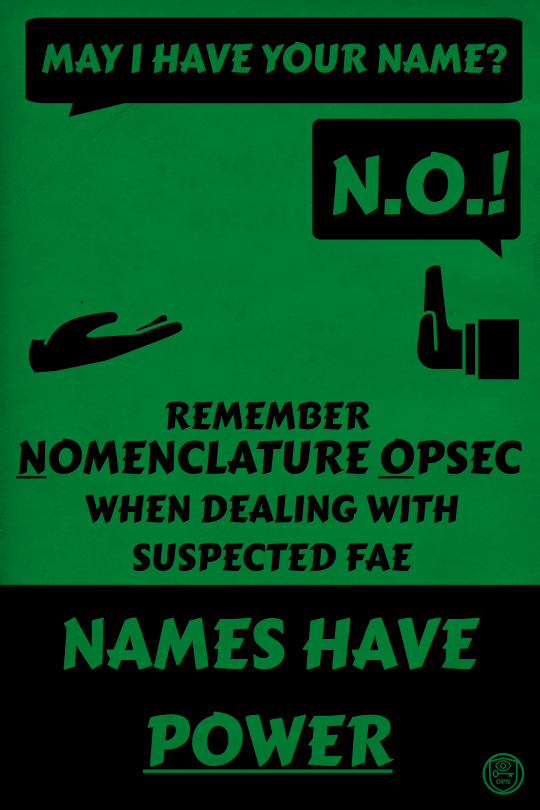
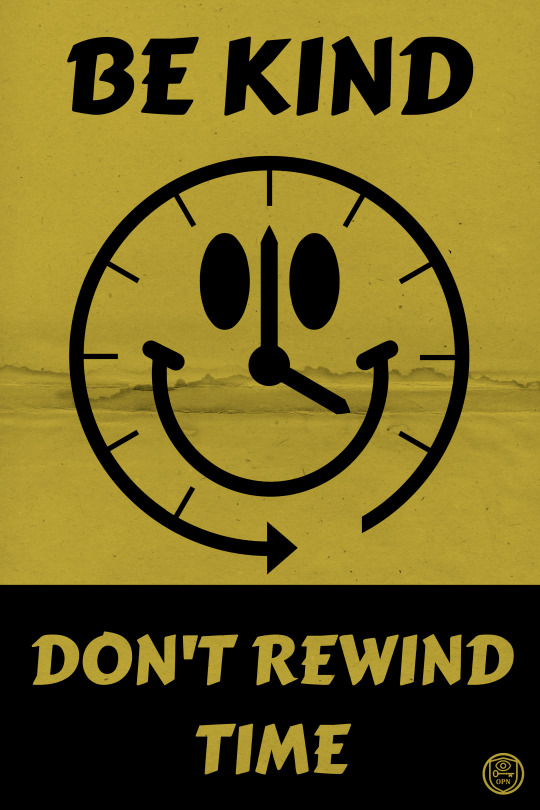


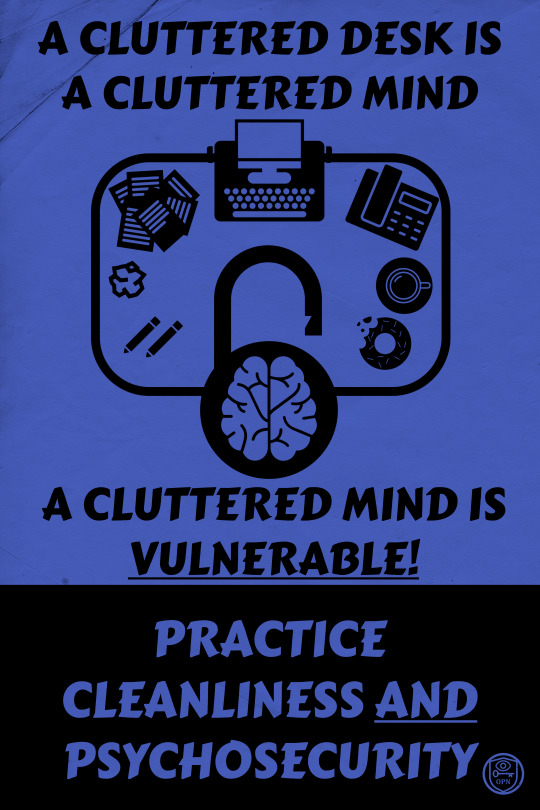
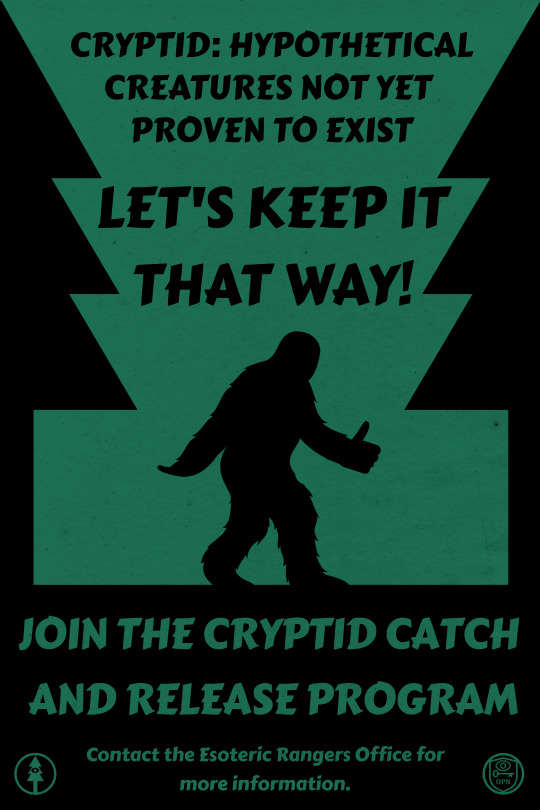
I feel confident enough to post these now. A collection of all the existing posters after some edits from the other post that got 13k notes! These are full size/quality. Go nuts.
You may use them for wallpapers, tabletop campaigns, whatever. Consider tipping me or buying a print or sticker on ko-fi here! If you do use them, let me know what for, or send pictures!
#ooc post#office for the preservation of normalcy#poster design#artists on tumblr#urban fantasy#workplace safety#cryptid#fae#aliens#ufos#demons
117K notes
·
View notes
Text

Atlantic Blue Collar Salmon
At a fish union near you
251 notes
·
View notes
Text
Do you think cremation places bother to clean the giant blender between "customers"? When they grind up your desiccated bones to produce fake ashes for your loved ones to scatter, are said loved ones also getting little bits of everyone who's come before you?
2K notes
·
View notes
Text

UNPLUG!
2K notes
·
View notes
Text


AGAIN?!?!?
#Boeing#whistleblower#aviation safety#737 Max#Spirit AeroSystems#MRSA infection#quality concerns#aviation industry#corporate accountability#workplace safety#whistleblowing#legal action#medical emergency#public health
144 notes
·
View notes
Text
A Nova Scotia excavation company has been fined $80,000 after a worker died when scaffolding collapsed on one of its job sites. In a decision released Wednesday, a Nova Scotia provincial court judge in Pictou, N.S., found the failure by Blaine MacLane Excavation Ltd. to ensure scaffolding was properly installed led to the 2020 death of Jeff MacDonald, a self-employed electrician. The sentence was delivered after the excavation company was earlier found guilty of an infraction under the province’s Occupational Health and Safety Act. Judge Bryna Hatt said in her decision she found the company “failed in its duty” to ensure that pins essential to the scaffolding’s stability were present at the work site.
Continue Reading
Tagging: @newsfromstolenland
#workplace safety#legal issues#health and safety#occupational hazard#nova scotia#lawsuits#cdnpoli#canadian politics#canadian news#canada
50 notes
·
View notes
Text
Craig Harrington at MMFA:
The economic policy provisions outlined by Project 2025 — the extreme right-wing agenda for the next Republican administration — are overwhelmingly catered toward benefiting wealthier Americans and corporate interests at the expense of average workers and taxpayers. Project 2025 prioritizes redoubling Republican efforts to expand “trickle-down” tax cuts for the wealthy and deregulation across the economy. The authors of the effort’s policy book, Mandate for Leadership: A Conservative Promise, recommend putting key government agencies responsible for oversight of large sectors of the economy under direct right-wing political control and empowering those agencies to prioritize right-wing agendas in dealing with everything from consumer protections to organized labor activity. [...]
Project 2025 would chill labor unions' abilities to engage in political activity. Project 2025 suggests that the National Labor Relations Board change its enforcement priorities regarding what it describes as unions using “members' resources on left-wing culture-war issues.” The authors encourage allowing employees to accuse union leadership of violating their “duty of fair representation” by having “political conflicts of interest” if the union engages in political activity that the employee disagrees with. [Project 2025, Mandate for Leadership, 2023; National Labor Relations Board, accessed 7/8/24]
Project 2025 would make it easier for employers to classify workers as “independent contractors.” The authors recommended reinstating policies governing the classification of independent contractors that the NLRB implemented during the Trump administration. Those Trump-era NLRB regulations were amended in 2023, expanding workplace and labor organizing protections to previously exempt American workers. [Project 2025, Mandate for Leadership, 2023; The National Law Review, 6/19/23; National Labor Relations Board, 6/13/23]
Project 2025 would reduce base overtime pay for workers. The authors recommend changing overtime protections to remove nonwage compensatory and other workplace benefits from calculations of their “regular” pay rate, which forms the basis for overtime formulations. If that change is enacted, every worker currently given overtime protections could be subject to a slight reduction in the value of their overtime pay, which the authors claim will encourage employers to provide nonwage benefits but would effectively just amount to a pay cut. The authors also propose other changes to the way overtime is calculated and enforced, which could result in reduced compensation for workers. Overtime protections have long been a focus of right-wing media campaigns to reduce protections afforded to American workers. [Project 2025, Mandate for Leadership, 2023, Media Matters, 7/9/24]
Project 2025 proposes capping and phasing out visa programs for migrant workers. Project 2025’s authors propose capping and eventually eliminating the H-2A and H-2B temporary work visa programs, which are available for seasonal agricultural and nonagricultural workers, respectively. Even the Project 2025 authors admit that these proposals could threaten many businesses that rely on migrant workers and could result in higher prices for consumers. [Project 2025, Mandate for Leadership, 2023]
Project 2025 recommends institutionalizing the “Judeo-Christian tradition” of the Sabbath. Under the guise of creating a “communal day of rest,” Project 2025 includes a policy proposal amending the Fair Labor Standards Act to require paying workers who currently receive overtime protections “time and a half for hours worked on the Sabbath,” which it said “would default to Sunday.” Ostensibly a policy that increases wages, the proposal is specifically meant to disincentivize employers from providing services on Sundays as an explicitly religious overture. [Project 2025, Mandate for Leadership, 2023]
[...]
International Trade
Project 2025 contains a lengthy debate between diametrically opposed perspectives on international trade and commerce.Over the course of 31 pages, disgraced former Trump adviser and current federal inmate Peter Navarro outlines various proposals to fundamentally transform American international commercial and domestic industrial policy in opposition to China, primarily by using tariffs. He dedicates well over a dozen pages to obsessing over America’s trade deficit with China, even though Trump’s trade war with China was a failure and as he focused on China, the overall U.S. trade deficit exploded. Much of the rest of Navarro’s section is economic saber-rattling against “Communist China’s economic aggression and quest for world domination.”In response, Kent Lassman of the conservative Competitive Enterprise Institute promotes a return to free trade orthodoxy that was previously pursued by the Republican Party but has fallen out of favor during the Trump era.
The Heritage Foundation’s Project 2025 agenda would be a boon for the wealthy and a disaster for the working class folk.
See Also:
MMFA: Project 2025’s dystopian approach to taxes
#Economy#Project 2025#The Heritage Foundation#Donald Trump#Income Inequality#Mandate For Leadership#Federal Reserve#IRS#Student Loan Debt#Unions#Labor#Overtime Pay#Independent Contractors#H2A Visa#H2B Visa#Sabbath#Workplace Safety#Gender Pay Gap#Trade#Consumer Financial Protection Bureau
65 notes
·
View notes
Link
The railroad corporations blocked safety laws, the union fought for safer conditions, the federal government intervened against the union. This is the results.
694 notes
·
View notes
Text
Meet Mrs. Natalie Nice...

Natalie is a hard worker in one of today's high-end scientific fields. Why, her boss wouldn't know where the test tubes were kept if not for her tireless efforts! Well, not quite tireless...
She's quite tired. Mrs. Nice has been burning the candle at both ends to impress the boss, and she's about to make a terrible mistake because of it.
Can you spot the mistake Mrs. Nice is making?

That's right! Carelessness in the workplace has consequences!
That wasn't coffee! (good) Coffee doesn't glow green!

Whoopsie! Now Mrs Nice is Mrs. Naughty...lus! Nautilus.
And Mrs. Nautilus is not happy!

By not watching what she was doing Natalie has wasted her whole lunch break turning herself into an abomination of science. All without noting dosage, temperature, and other important factors, not to mention completely circumventing the double blind protocol. Her data is completely invalid for the larger project.
Don't be a Mrs. Nautilus, be a Mrs. Nice! Remember:
Take regular breaks, get plenty of rest, and-
-If the Goo's Alight, it's Not alright!
Drinking glowing goo is the 1% cause of monsterism in adults ages 18-35, please science responsibly, a message from your friends at Cocytus Comics.
Each pic used a different prompt around the basic format of:
Secretary with a bob-haircut, redhead, green blouse and pearls, , , comic panel by Jack Kirby and Alex Toth, 1968, in the style of 60s Marvel
a secretary with lavender skin, tentacles for hair, , , comic panel by jack kirby and alex toth, 1968, in the style of 60s marvel
#Mrs. Nautilus & Mrs. Nice#tyrannomax#coctyus comics#ai assisted art#ai edits#dall-e 3#unreality#generative art#workplace safety#monsterism#octopus#cephalopod#mutation
90 notes
·
View notes
Text

if your business harness does fail, you will be responsible for its replacement and recalibration, especially if that failure leads to your gruesome death.
#business#businesscore#business memes#office space#memes#nostalgia#retro#vaporwave#retro tech#90s#90s aesthetic#laptops#world wide web#internet#surf the web#workplace safety
27 notes
·
View notes
Text
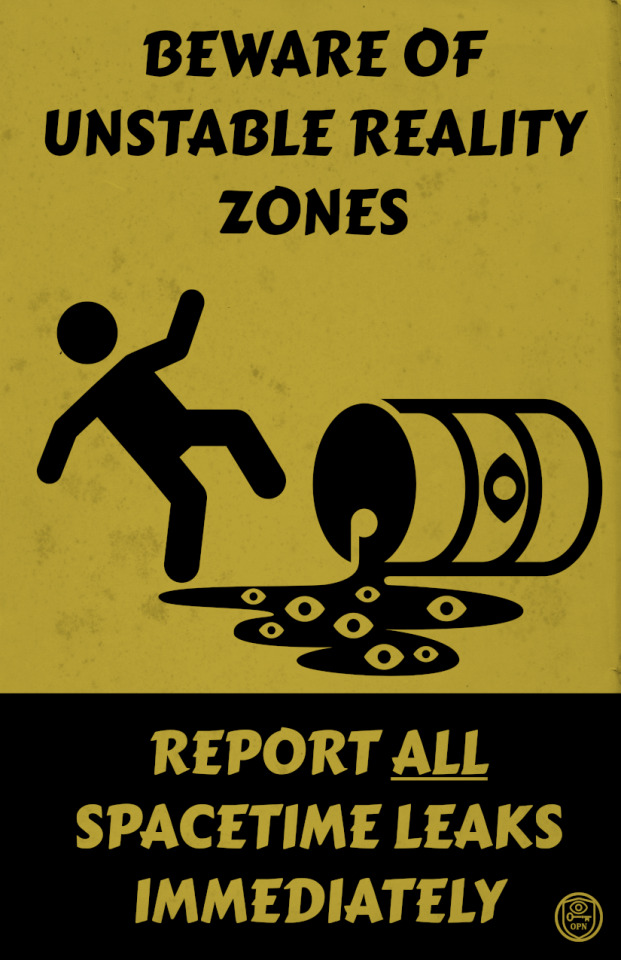
[Somewhere deep in the Bronx there’s a warehouse building with a big sign that reads “Carpet Heaven,” and I’m standing outside of it. When I blinked, it changed to “OPN Site 27.” It stayed like that after I looked at it again - a feature of the Office’s “memetic masking” that hides their locations from those not exposed to the supernatural. Or “Extranormal,” as is the Office’s preferred term. Site 27 is the official name for the location - though the staff that work there call it something else: the Station.
Graffiti dots the bricks of the building’s exterior, following me up the small stairs to the building’s entrance. There’s a nondescript door that buzzes as I approach, quietly unlatching. Past the doors, security towers loom in front of me. An electronic voice asks me to place my belongings in a tray and slide them into a conveyor. I do as I’m asked, but I’m somewhat confused - why does this place need so much security?]
A few moments later, I retrieve my things from the tray and keep moving. I’ve become used to the intentional plainness of Office locations. I’m always torn as to what it means. In a place like this, it’s obviously meant to put people off. This is Carpet Heaven, the most boring place in the world. Every panel, every wall, every chair seems to be chosen with the sole purpose of being as unremarkable as possible. But then, many interior locations within the Office are similarly designed. They’re not designed to fool anyone. Did the designers just get used to it?]
[My thoughts are interrupted as I walk into the tiny reception room, a desk with a few chairs and a single fake potted plant. A man stops his conversation with the receptionist, looking me up and down. He’s short and stocky, heavyset, a man clearly used to physical labor - and judging by the look on his face, not used to being inconvenienced at work. His hairy arms folded over a broad chest, his thick eyebrows scrunched into a wary suspicion. A thick mustache completes the look of a blue collar dad, close to retirement but not close enough.]
B] Hendricks. Ma’am.
M] Mr Koppel?
B] Call me Barry.
M] I hear you’re the person to talk to when it comes to occupational health and safety in the Office.
B] I got a reputation for it.
M] I saw the poster about, uh….unstable reality zones, and I wanted to ask you about it.
B] About the zones, or our response to ‘em.
M] Sort of…both if that’s okay. I figured a quick tour wouldn’t be out of the question.
[He nods, his arms not moving from their position across his chest. His voice had an air of curt evasiveness, clearly not enjoying my questions. Now, there’s a moment of awkward silence.]
M] You seem annoyed, Barry.
B] Yeah, well. Let’s just say I wasn’t real happy when I heard you were coming over. Especially today.
M] What’s today?
B] Work meeting later. Something I didn’t think I’d have to start late, and I hope I won’t have to.
M] I won’t take up too much of your time, I promise.
B] No. You won’t.
[It’s a veiled threat, but his tone doesn’t veil it very well. He gives the receptionist a look that she returns, and jerks his head slightly, leading me through the door deeper into the facility. Past the doors, it looks like something you’d expect from a government facility: bare concrete and pipes, emergency lights every several yards. It all looks very old. At this point, Barry seems to catch himself, his tone shifting to that of a practiced but bored tour guide as he leads me down the hallway.]
B] This is OPN Facility 27, known as the Northeastern Power Facility, or to the people that actually work here, the Station. The Station was discovered in 1932 during Operation Doorway, an attempt to investigate rumors of spatially-noncompliant buildings in the United States - that is, buildings bigger on the inside. After mapping and cataloging it, the Station had the distinction of being one of the few spatially noncompliant facilities grandfathered into current extranormal building code.
[Just down the hall is a locker room, which we move through. Barry points to a sign that reads “Hard Hat Area Past This Point” and hands me a hat taken off of a nearby peg.]
B] In other words, this facility is one of the only places in the US legally allowed to be bigger on the inside. The Office did this cause, for reasons that still ain’t totally clear, the Station anomalously produces enough electricity to power the entire eastern seaboard with no energy input. This building powers every Office facility this side of the Mississippi and north of the Mason-Dixon. New York, DC, Philly, Boston. Further than that, with hydrogen.
[Opening the next set of doors, the facility opens up substantially, a wide open space that looks more like I’d think a warehouse would look. The ceiling several stories above, massive industrial shelves at the edges of the space, machines operating in distinct areas of the room. A forklift beeping away, carrying yellow drum barrels on a pallet. A few workers were here and there, some of them giving Barry a quizzical look that he didn’t return.]
B] It needs people like us to maintain the works during reality shifts, pump out the byproduct, keep everything in as much working order as we can.
[Another set of doors ahead - a massive sign above them reading “End of Geometrically Compliant Building Space.” The hazard symbol on the sign depicted a building within a larger building, the larger of the structures emblazoned with the eye symbol and a question mark. Another sign on the door read “Audio-Memetic Inoculation Equipment Required” with a depiction of a head wearing both a hard hat and large headphones. Barry stopped and jerked a thumb at the door. His voice was low and serious.]
B] Like any spatially-noncompliant structure, this place doesn’t make sense. This wall right here is the absolute limit of what the building’s size should allow, and as you can see, it keeps going.
[He paused, looking back the way we came for a moment.]
B] When the Office figured out they could use this place for free power, they rushed in. But the Station….it didn’t take kindly to that. It doesn’t like intruders. The higher-ups don’t like hearing it, but this place is….kinda alive. It grows, changes. We don’t know who built it, or even if anyone built it. Coulda just appeared one day. From the late 30’s to the early 40’s, it was…a lot of death, lotta guys going home without hands or legs or an eye. Machines not working right, hallways shifting around, pipe structures growing suddenly. There’s places, deep in the belly of this fucking machine, that I’ll never go…we’ve blocked off rooms where time runs in reverse, or that swap temperature extremes every forty-five seconds. Lotta guys like me laid down their lives figuring this place out, mapping it. That’s what the signs and posters are for. Every warning in this building is written in blood.
[He gestured to a worker at a nearby desk, who got up and reached for a tray.]
B] Just past these doors, there’s a hallway in complete silence. Not just a lack of sound, pure silence. If you listen to the lack of sound, you go insane. Understand?
M] I don’t understand why you can’t just…avoid it, or unravel it, or—
B] The Office ain’t gonna just put it’s head in the sand, ma’am. It can’t. And all respect to the wizards and shit upstairs, but sometimes you can’t just wave your hand and make it go away, either. The Station is important. Without us, the entire Office goes down. It’s the sacrifice we make. We gotta deal with the situation in front of us, and sometimes the situation’s got teeth.
[The worker walked up, offering Barry two pairs of headphones and a clipboard. He took them, checked them over, and handed one to me.]
B] Here. Press the button on the right side, you’ll hear elevator music and nothing else. This’ll protect you from the silence. Then initial the sign out sheet.
[I did so, sliding the bulky device over my head and hearing generic Muzak once I hit the nub on the right. At this point, I didn’t question much of anything. They knew what they were doing. I took the clipboard from him - the sheet was keeping track of the headphones, calling them safety equipment. I wrote my initials on the sheet, noting I was a ‘visitor’, and as I did I noticed Barry and the other worker conversing in sign language.
I was slightly surprised at first. But it made sense - if you had to work a lot of the time in silence with these headphones on, it might be worth the time to teach everyone ASL. I tried not to betray any comprehension. They didn’t need to know I’d grown up with a deaf cousin, had a deaf roommate in college, that while I was rusty I could understand most of what they were saying. The two men gestured furtively, quickly, an ‘accent’ that tinged their words.]
<We have to postpone union meeting?>
<No. Same time. Won’t take long. Lady is looking for scapegoat.>
<From Upstairs?>
<Unlikely. Ghost-talking I-R-E-N-E telling me she’s been asking around lots of departments.>
<Why?>
<Don’t know. Could be politics.>
<LA?>
[Barry looked over his shoulder, and I tried to look nonchalant, putting the clipboard on a hook by the door and giving him a smile and a thumbs up.]
<Maybe.>
[He nodded and opened the door. I felt a physical sensation as I passed the threshold, and it was silent. It was a silence so intense I could feel it on my skin. When my feet hit the floor I felt nothing, not even the vibration through my own body. It was oppressive, covering me in a heavy blanket. I heard the music in my ears but I was intensely aware that a bundle of plastic and electronics was all that stood between me and…that. I felt like an eternity. I tried to focus on the music as my vision swam, having to stop to breathe when we rounded a corner. When we finally passed through the hallway, taped marks on the floor told me where it was safe to take off my headphones. I was almost out of breath, a little disoriented.]
B] You get used to it.
M] Do you?
B] You gotta if you work here, ma’am.
[His voice slipped back into tour guide mode as the space widened again. Huge doorways on each of the three walls ahead, large enough for a vehicle to pass through. Each passageway had different signage, and two had a conveyor belt stretched across the room, running parallel above us with clear markings on the floor underneath them.]
B] To the left we have the Gearbox, straight ahead is Onto-Runoff Byproduct Packaging, and to the right is the Dynamos, where we try and funnel all power generated by the Station so it can be directed to other facilities or converted into hydrogen energy storage.
M] Onto-Runoff?
B] That, ma’am, is the stuff on the posters.
[He pointed up to the conveyor belt. Yellow barrels traveled across the room, stamped with the Office logo on one side, and a depiction of an eye on the other.]
B] It’s a byproduct of the Station’s works. The labcoats have been studying it for decades. They’re not real sure what it is, just that it…kind of isn't. It technically doesn’t actually exist. No mass, can't be detected on any spectrum they got. Theory is that we're not actually seeing it, just the absence it creates. Pure, concentrated entropy, runoff from the Station creating energy from nothing. You can’t violate laws of spacetime without some consequences, and in this case it’s creating all this…almost-kinda-real entropy that gets everywhere if we don’t clean it up.
M] Sounds like the Ontophages.
B] Yeah, like that. They think they’re related, but we ain’t seen an Ontophage down here in ages. This non-stuff drops off pipes down in the works, or leaks out of compressors. Pools in lower areas, or gums up machines. If it touches anything outside of the works that exists, it starts to cause what the Office calls ontological dissolution - it gradually stops existing, like an acid that melts reality. Some of it gets processed for the Office’s use, some of it goes to the folks at the Yellow Circle, a good chunk of it goes to long term storage.
M] What does the Office use it for?
[At this, Barry gives me a sidelong look as we approach a small office in the corner between two junctions, little more than a shack.]
B] That part’s classified. We don’t even know. They don’t tell us. Could be a secondary energy process, could be they use it to contain something….could be a weapon.
[The tone in that last phrase…we enter the shack and Barry grabs a drink from a water cooler.]
M] You sound like you have an idea of what it’s used for.
B] A hunch. This stuff is dangerous. It’s half the reason we made the Union way back.
M] The Union?
[I remembered them signing that word - two fingers extended on each hand, moved in a horizontally circular motion.]
B] The North American Supernatural Worker’s Guild. Started in ‘42 after the big paracompressor explosion down in sublevel 17. The Office kept pushing us, we kept cutting corners, and eventually five people died. Including my great uncle. After that, my grandfather started the Union to push for better working conditions and hazard pay.
[His tone is softer now, taking a drink. He gestures to the Unstable Reality Zones poster on the wall, a copy of which began my trip here.]
B] I could talk all day about the history of it. We ain’t perfect, of course. Didn’t accept nonhumans until ‘63, which my father went to his grave ashamed of, but we’re the reason the Office more or less abides by the safety guidelines we’ve come up with. Without that there’s a work stoppage, and everything grinds to a halt.
M] Has there been a lot of conflict between the Union and the Office in the past?
B] It’s all conflict, ma’am. The Union and the Office are engaged in a state of irreconcilable disagreement. They wanna pay less and get more, we want better pay and better, safer work. The whole history of the Office can be seen through that lens.
M] Do you see the posters as a win for the Union?
B] Without a doubt. You know the bodycount we’d have if we didn’t keep drilling all our safety precautions into everyone’s heads? Safety win, morale win. We need all the help we can get.
M] What do you mean?
[Barry finishes his drink, looking away, through the window looking out onto the junction.]
B] Ehh. I’ve said enough already.
M] You too, huh.
B] Hm?
M] Everywhere I go in this organization I’m being bounced off walls. Secrecy seems to be something you and the office both abide by. The Office acts like it’s giving me clearance, but….they’re curating my job.
B] Mmmh.
M] Everyone I talk to is knowledgeable about what I’m asking, sure, but they’re also….company people. All of them are either trying to cover their ass or they honestly believe that they’re doing the most important job in the world. The only person I’ve met so far with an honest opinion on the Office is you. I thought I might get some actual answers.
B] About what?
M] Anything. How the Office determines normality, the numbers stations, the identity of the Director…what happened in Los Angeles.
[He stiffens.]
B] I don’t know anything about that.
M] You said the Runoff could be used as a weapon -
B] I said I had a hunch. Don’t put words in my mouth.
M] What’s your hunch based on?
B] Listen. I’m one of those guys covering my ass. If I say something I shouldn’t or I fuck up, I don’t get a slap on the wrist. I'm not some spokesman for the Board of Infernal Affairs. I’m a union officer, and we’re already on thin goddamned ice with the Office. Secrecy is a tool. We both use it for our own goals.
M] So you can’t help me.
B] I’m walking you back. This is fucking over.
M] That’s…probably for the best.
[I let the moment pass before I speak again.]
M] I don’t want to keep you from your union meeting tonight.
[He stops in his tracks, shooting a look over his shoulder. His face moves from surprise to realization to suspicion. After a moment he half turns back to me.]
B] Ma’am, what are you here for?
M] I just…want answers. All of these interviews have been someone beating around the bush because they’re scared. After your speech about it, I thought the union would be people who could stand up.
[Barry hesitates, frowns, and silently turns back to keep walking. My face burns in embarrassment, my heart racing. This wasn’t worth it. I wanted answers but this wasn’t worth it, was it? Shame now, but what if I pushed a button I couldn’t un-press?
Barry doesn’t speak. We reenter the room of silence, mechanically putting our headphones back on. As we round the corner in the hallway again, he stops. Of course I can’t hear him, but his frame calls as if he’s letting out a heavy sigh. He turns to me, and signs.]
<Back there, I was being honest. None of us know what happened, but we know something did. We have some shipment records that don’t make sense. Runoff shipped en masse to some site that’s not on public record anymore. Something called Project D-A-M-M-E-R-U-N-G. Our records are shredded. It’s like…>
[He trailed off - with signing, he sort of stared into space and tried to find the right words.]
<Like someone or something came in and tried to destroy everything to do with a certain subject, but only mostly succeeded. Like every fiftieth paper survived or was passed over. That’s what our meeting is about tonight. We know something happened and we’re deciding what to do next. You mentioned the stations. The stations are a part of it.>
[He pulls a pen from his vest pocket and writes down an address, handing me the paper.]
<Memorize this address, then burn it before you leave. Bring P-E-P-P-E-R-M-I-N-T oil. Put it on before you go. You’ll need it.>
(Buy the poster here.)
#office for the preservation of normalcy#interview#osha violation#still technically on hiatus#safety#workplace safety#health and safety#microfiction#short fiction#sci fi#urban fantasy#writers on tumblr
198 notes
·
View notes
Text
Hey, any of y’all wanna see my neighbors’ latest innovation in workplace safety?


18 notes
·
View notes
Text
Quebec Labour Minister Jean Boulet has amended his law project, Bill 19, regulating youth employment in the province to allow children under 14 to work in agriculture, provided the business has a maximum of 10 employees.
The proposed law, tabled in March, would limit the number of weekly hours Quebecers 16 and under can work during the school year to 17. It also sets the minimum legal working age at 14 — with some exceptions for jobs like babysitting or tutoring.
But Boulet's amendment would allow small agricultural businesses to be exempt from the new minimum working age and employ children as young as twelve.
[...]
This new exemption echoes the demands of employers, who asked for more exceptions to allow children under 14 to work.
But there are concerns over the agricultural environment being risky as injuries in young people are frequent. Some doubt the ability of Quebec's labour regulator, La Commission des normes, de l'équité, de la santé et de la sécurité du travail (CNESST), to ensure the safety of children in the workplace.
Full article
Tagging: @allthecanadianpolitics
#cdnpoli#canada#canadian news#canadian politics#québec#quebec#child labour#workers rights#children's rights#labour#agriculture#agricultural industry#jean boulet#bill 19#workplace safety#mine#what the fuck man#la commission des normes de l'équité de la santé et de la sécurité du travail#CNESST#child labour laws
192 notes
·
View notes
Text
Super/Natural, Inc. - Orientation 1-16
*Roundabout intensifies*

Aaaand we’re through part 1!
Part 2 (and beyond) will happen at some point, but I’m going to be returning to my regularly scheduled nonsense after a short break (I’ll be posting reposts in the meantime)
Had a ton of fun with this story, and hope you enjoyed it as well
Thanks for reading!
#super natural inc#supernatural#workplace safety#helen#webcomic#comic#comics#digital comics#comic strip#drawing#story#uh oh#uhhhhh#to be continued#is that a jojo reference#corporate life
8 notes
·
View notes
Text
I just had a nightmare of a family dying in a fire because their "smart" door malfunctioned and neither they or firefighters could open or get through it. My first thought after waking was imagine it happen on a workplace... Triangle Shirtwaist factory fire 2.0
Like say it's not locked, it opens from any workers touch and just keeps a log of their coming and going. But it has the strength of a Tesla cybertruck's door and when it malfunctions...
#didn't want my Halloween to be this scary but oh well#nightmare#workplace safety#triangle shirtwaist factory fire#smart home devices#capitalism#anti capitalism#labor unions#support unions#it's 5am and I slept for 3 and half hours#i don't know how to tag this
4 notes
·
View notes
Text
US Labor Department investigating HelloFresh for alleged migrant child labor in Aurora, Illinois - ABC7 Chicago
Popular meal kit service HelloFresh is being investigated for allegedly employing migrant children in Aurora, Illinois. — Read on abc7chicago.com/post/hellofresh-news-us-labor-department-investigating-alleged-migrant-child-aurora-illinois/15625851/
#Business#Child Labor#Child Safety#Employment#News#Occupational safety and health#OSHA#Safety#Safety News#United States#United States Department of Labor#Workplace Safety
4 notes
·
View notes